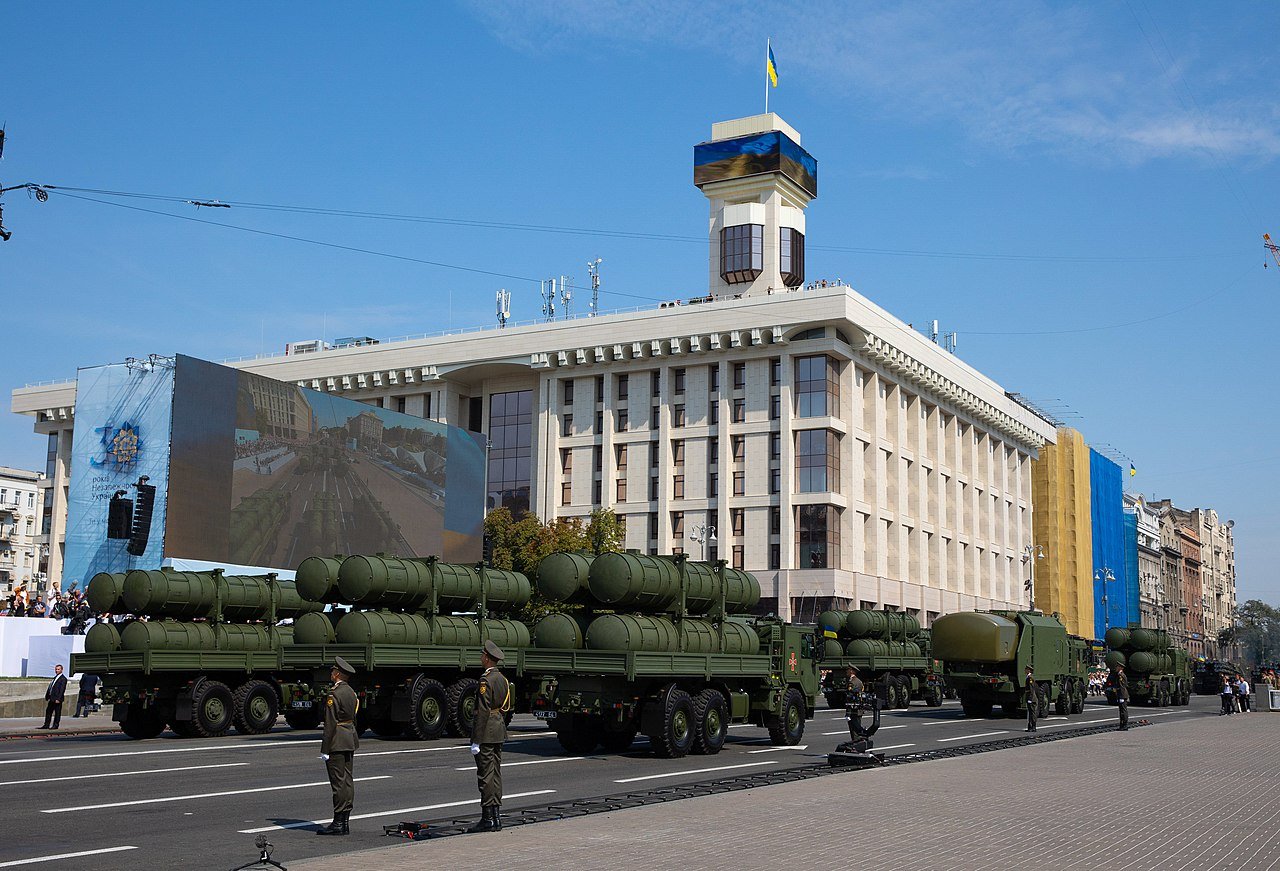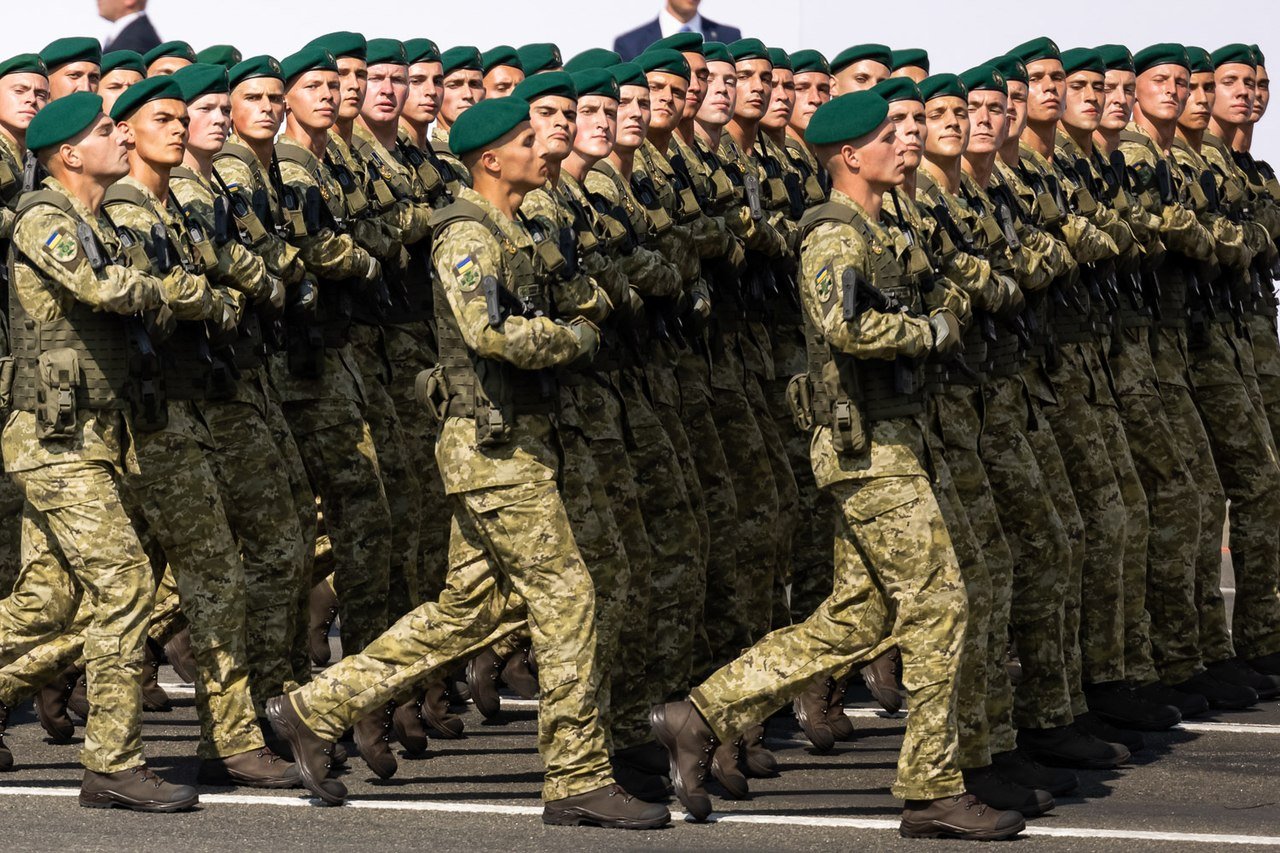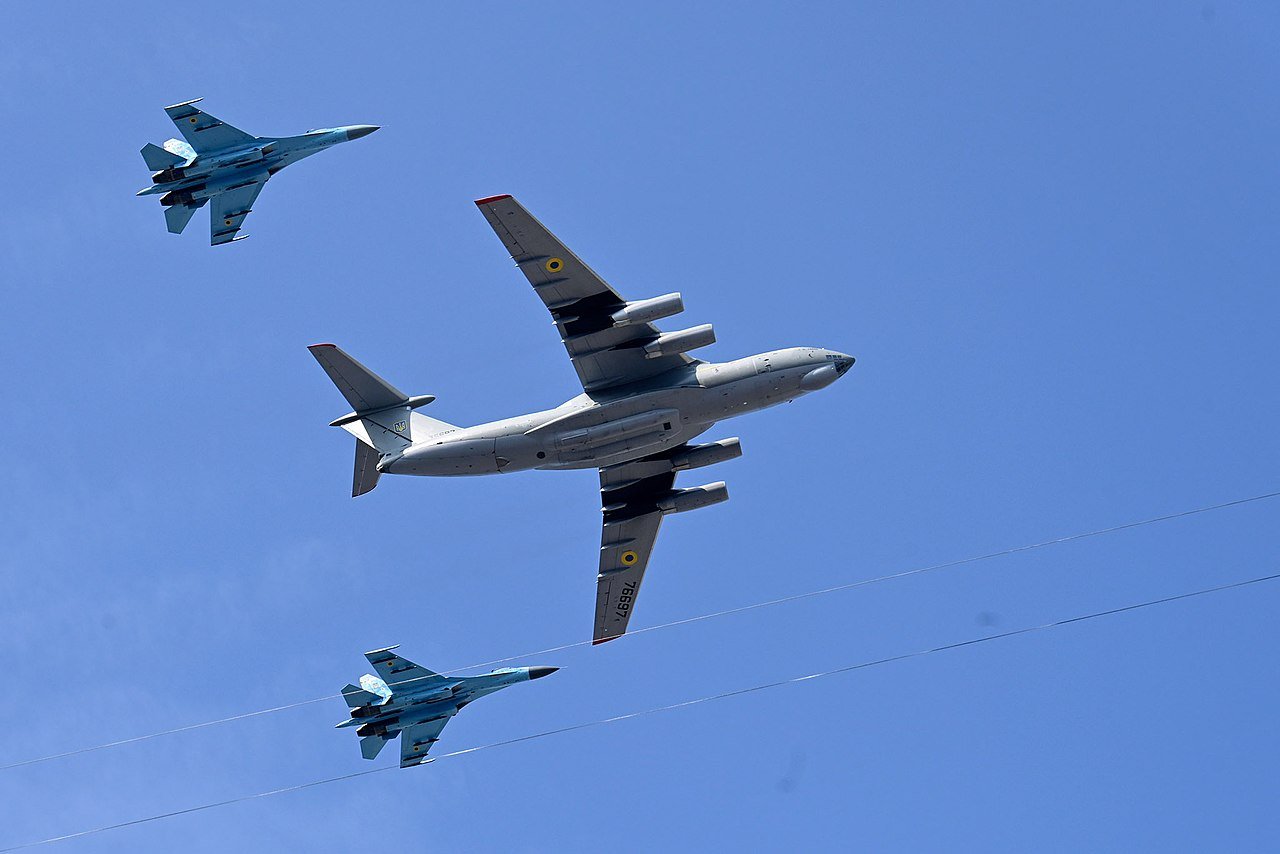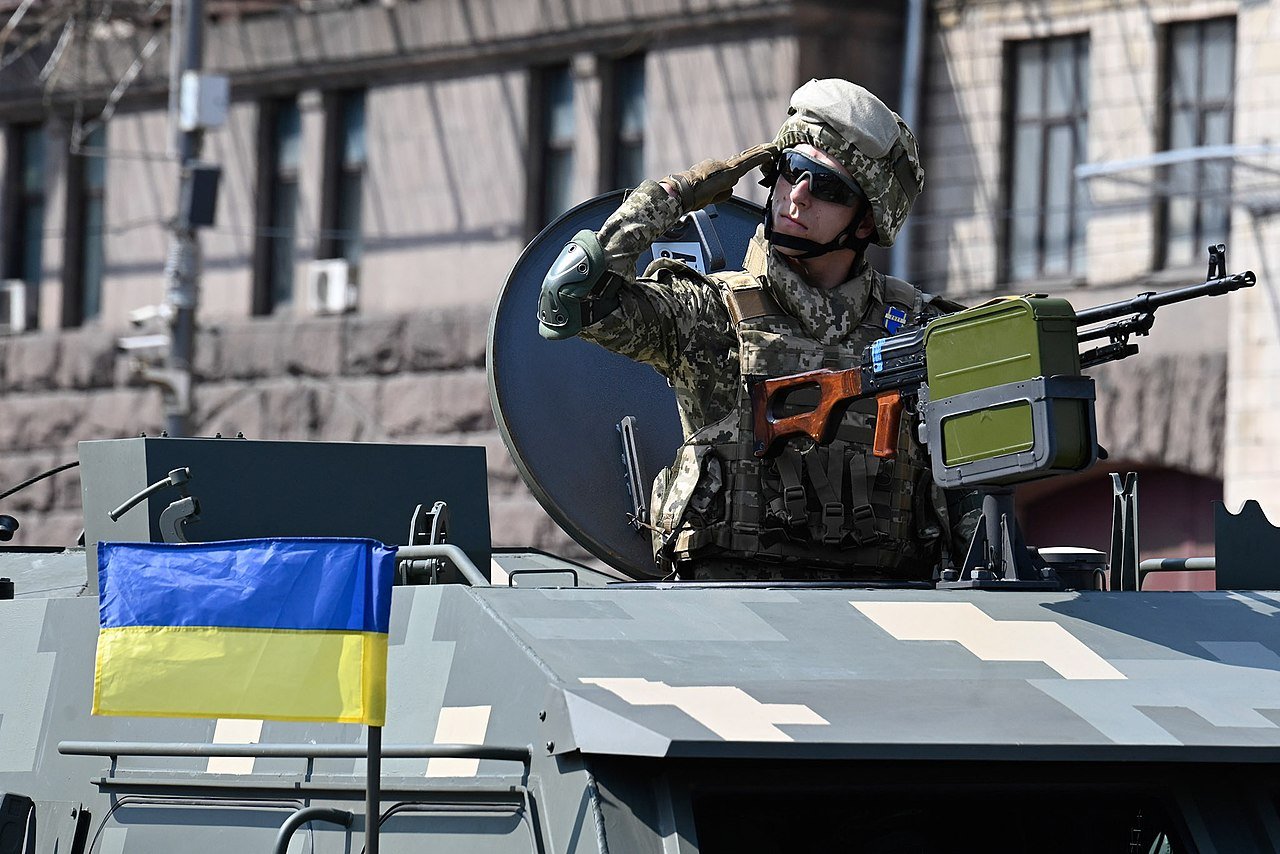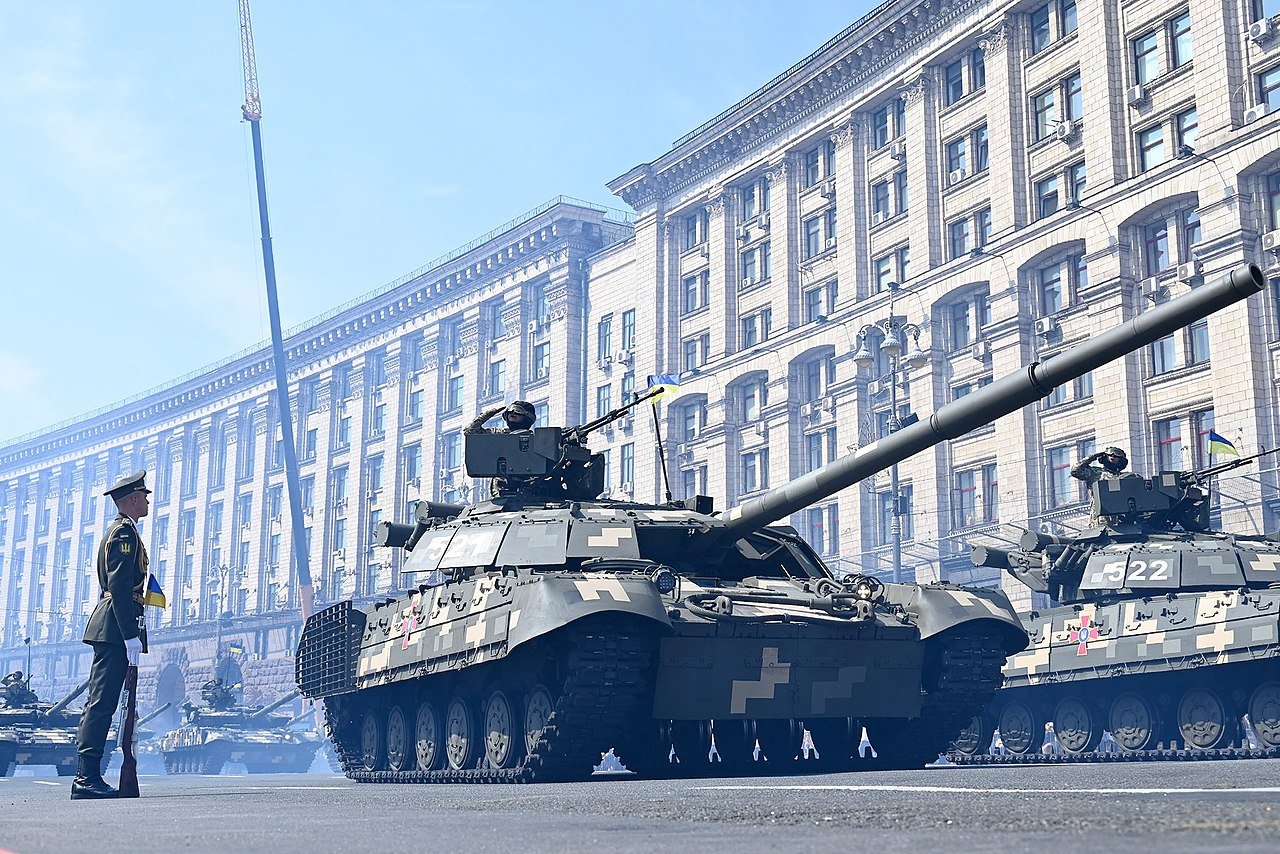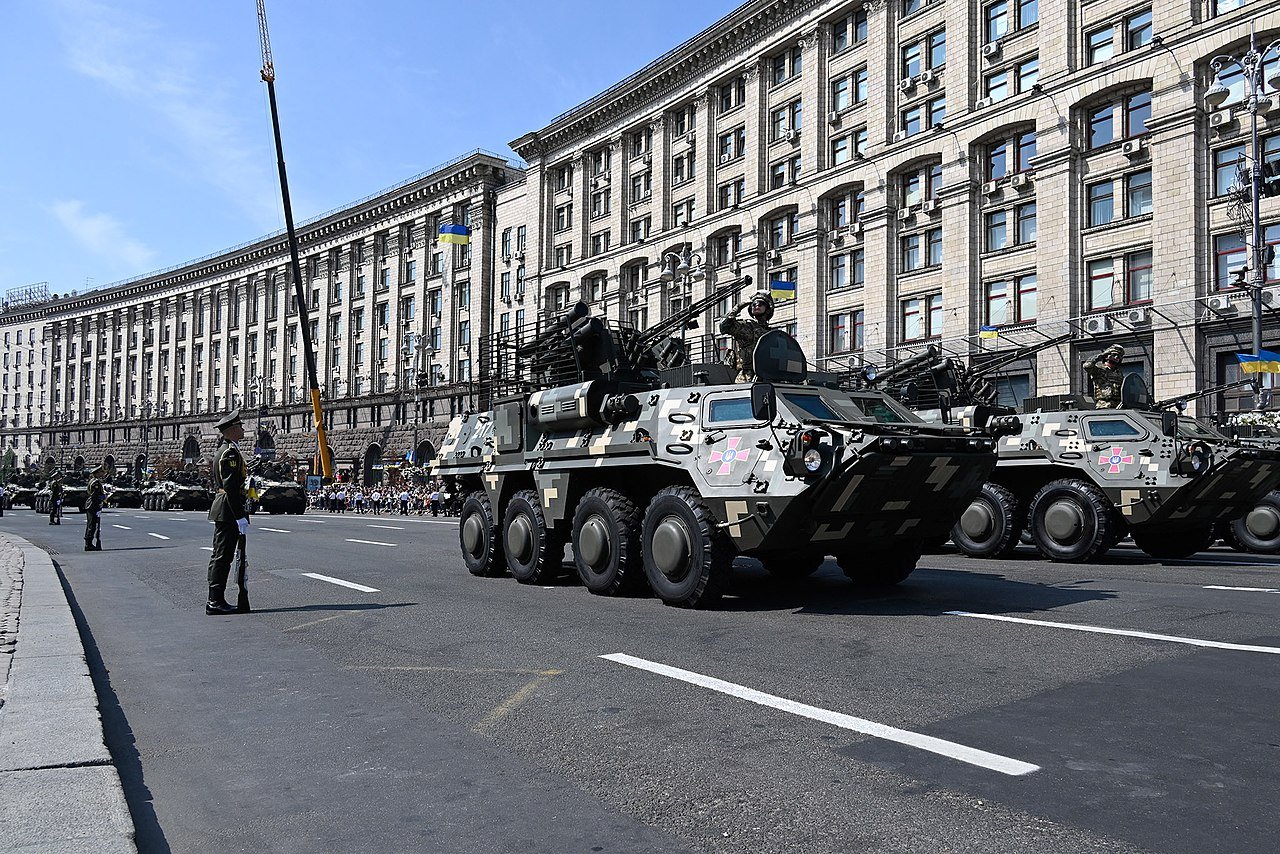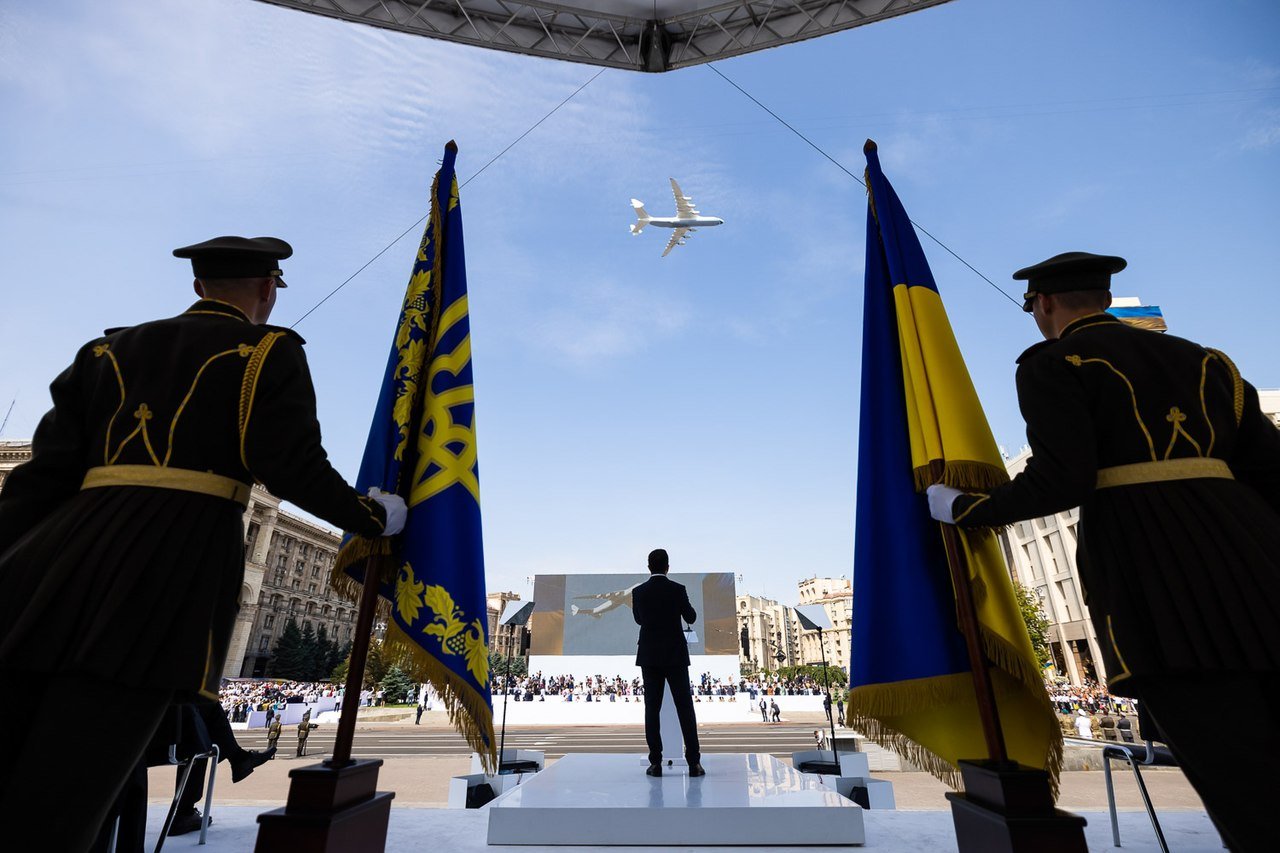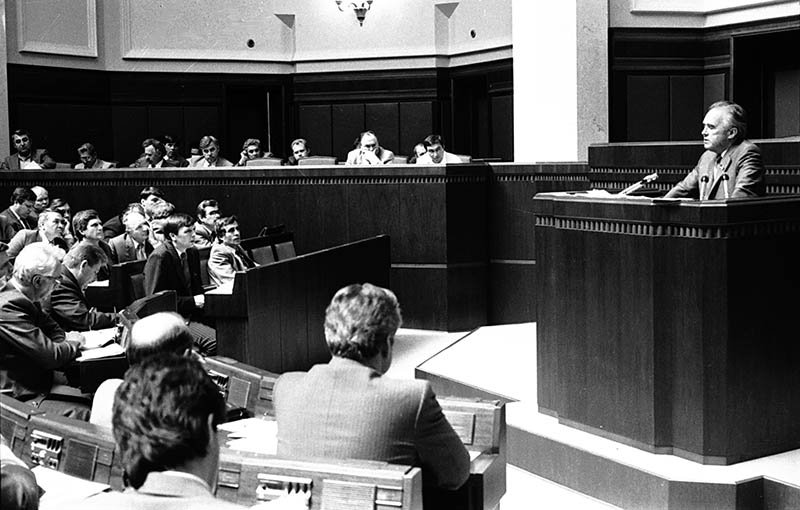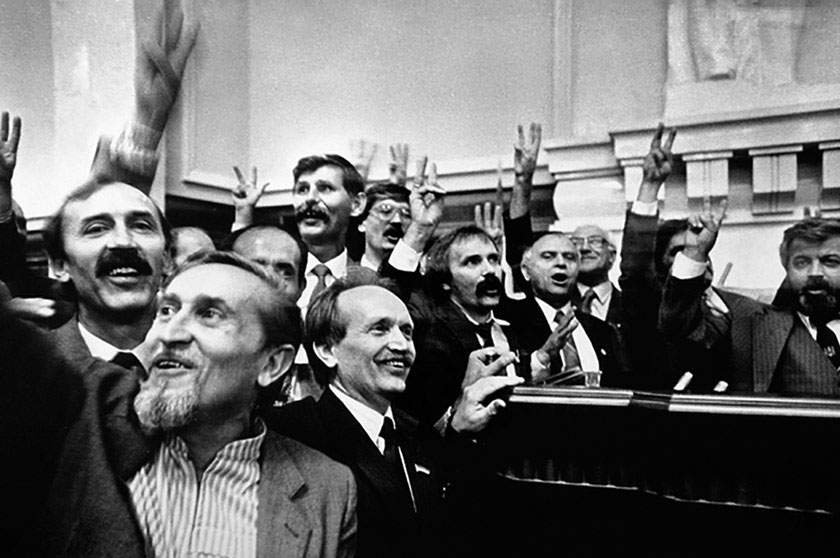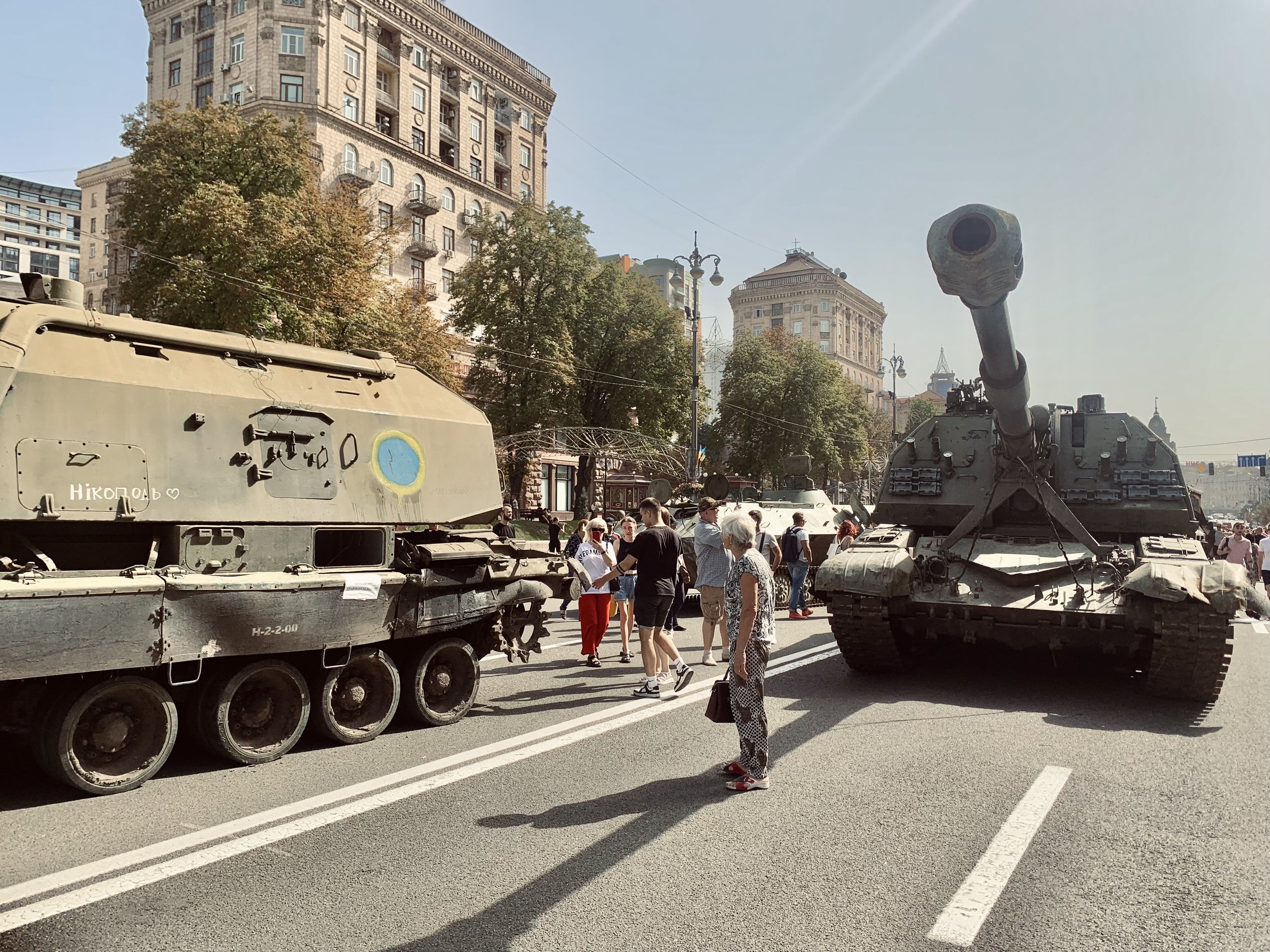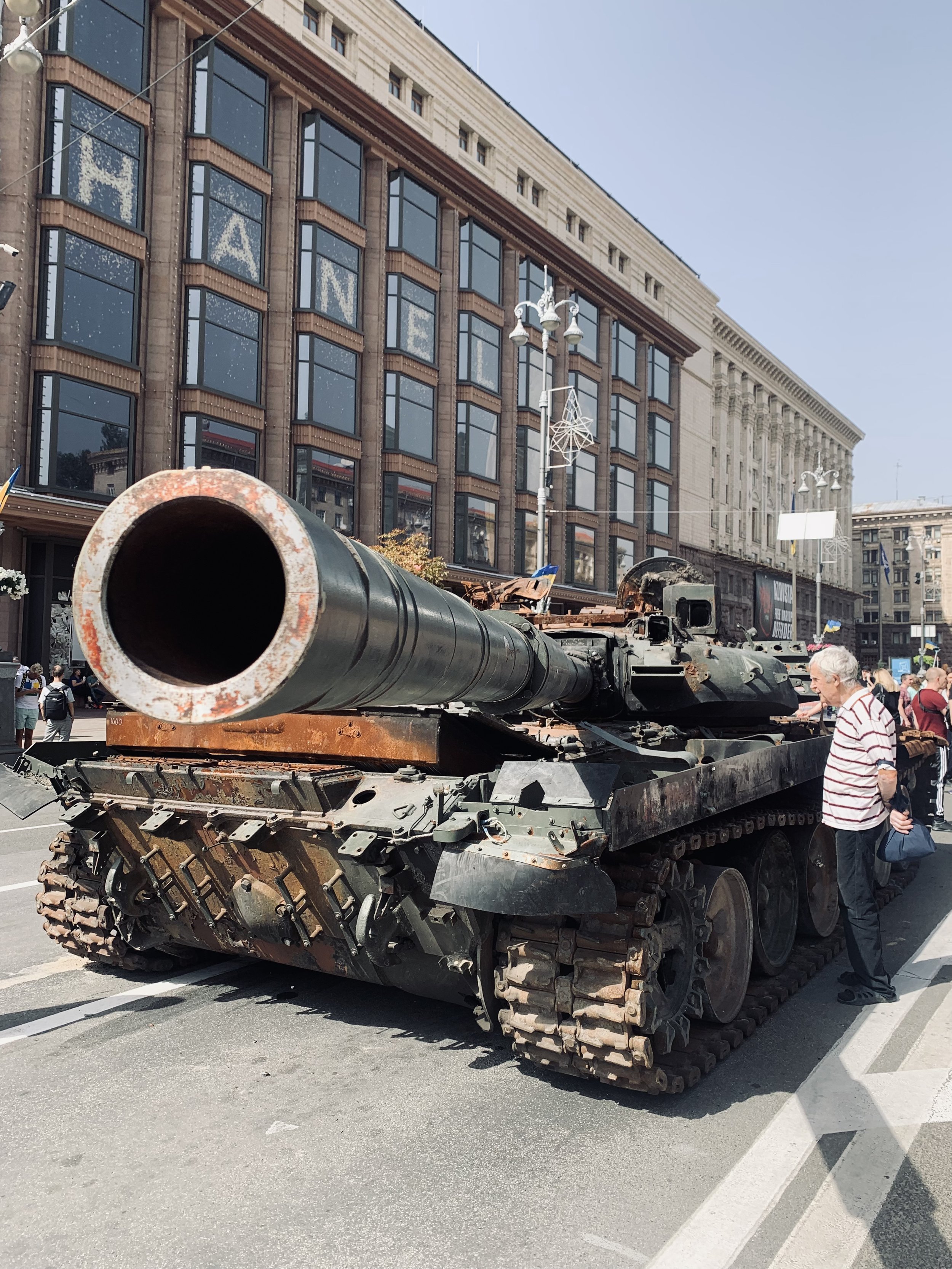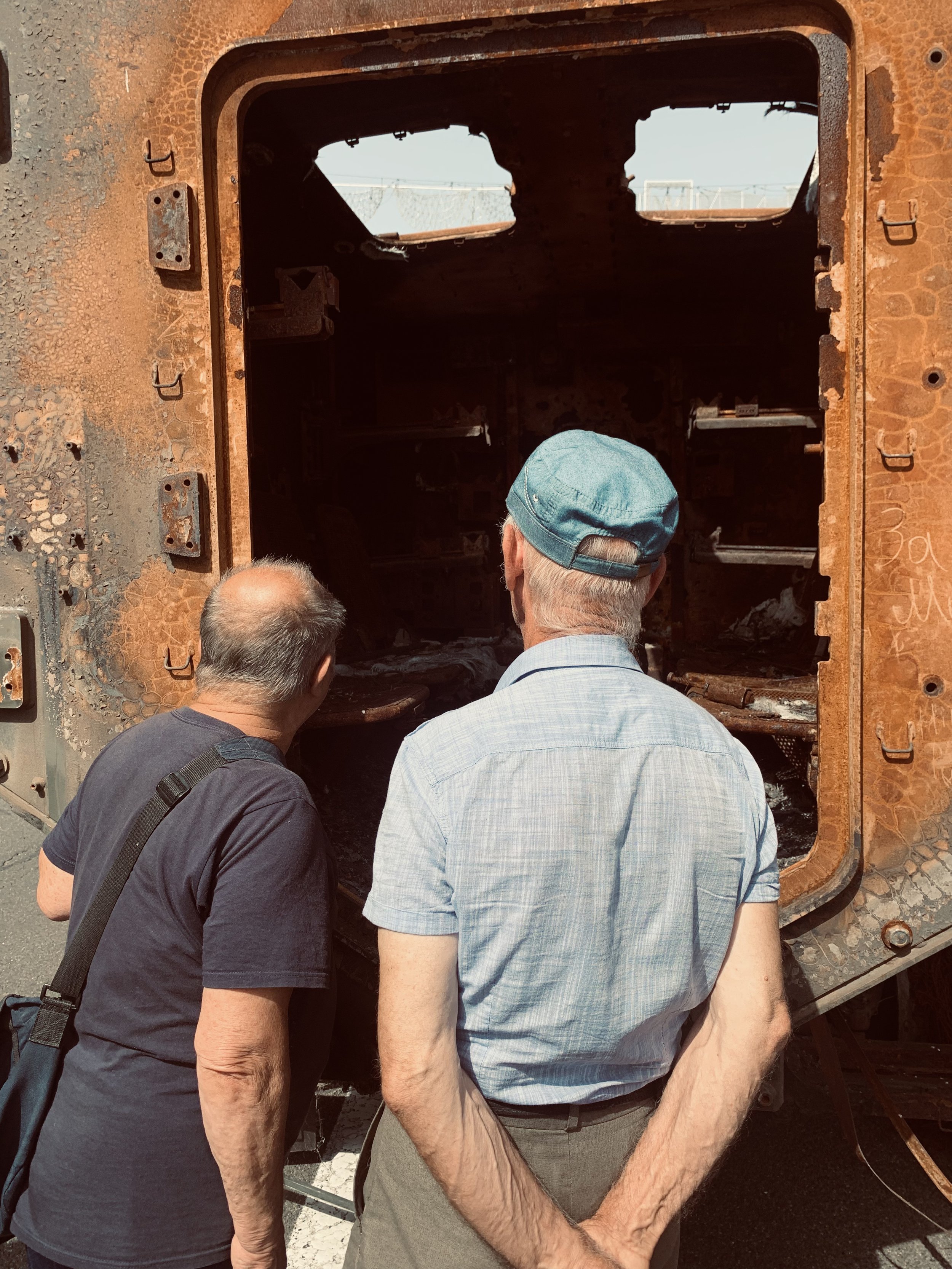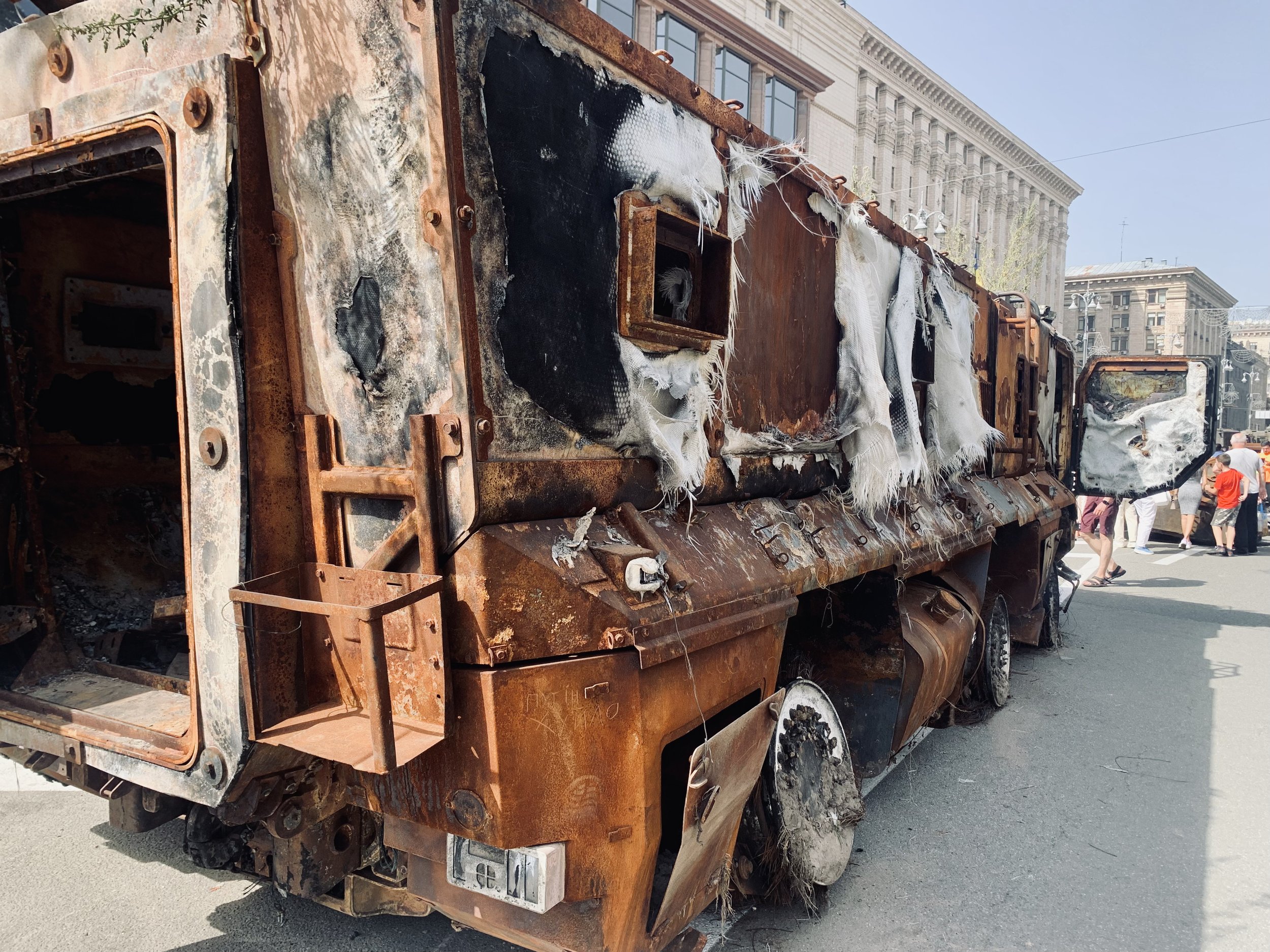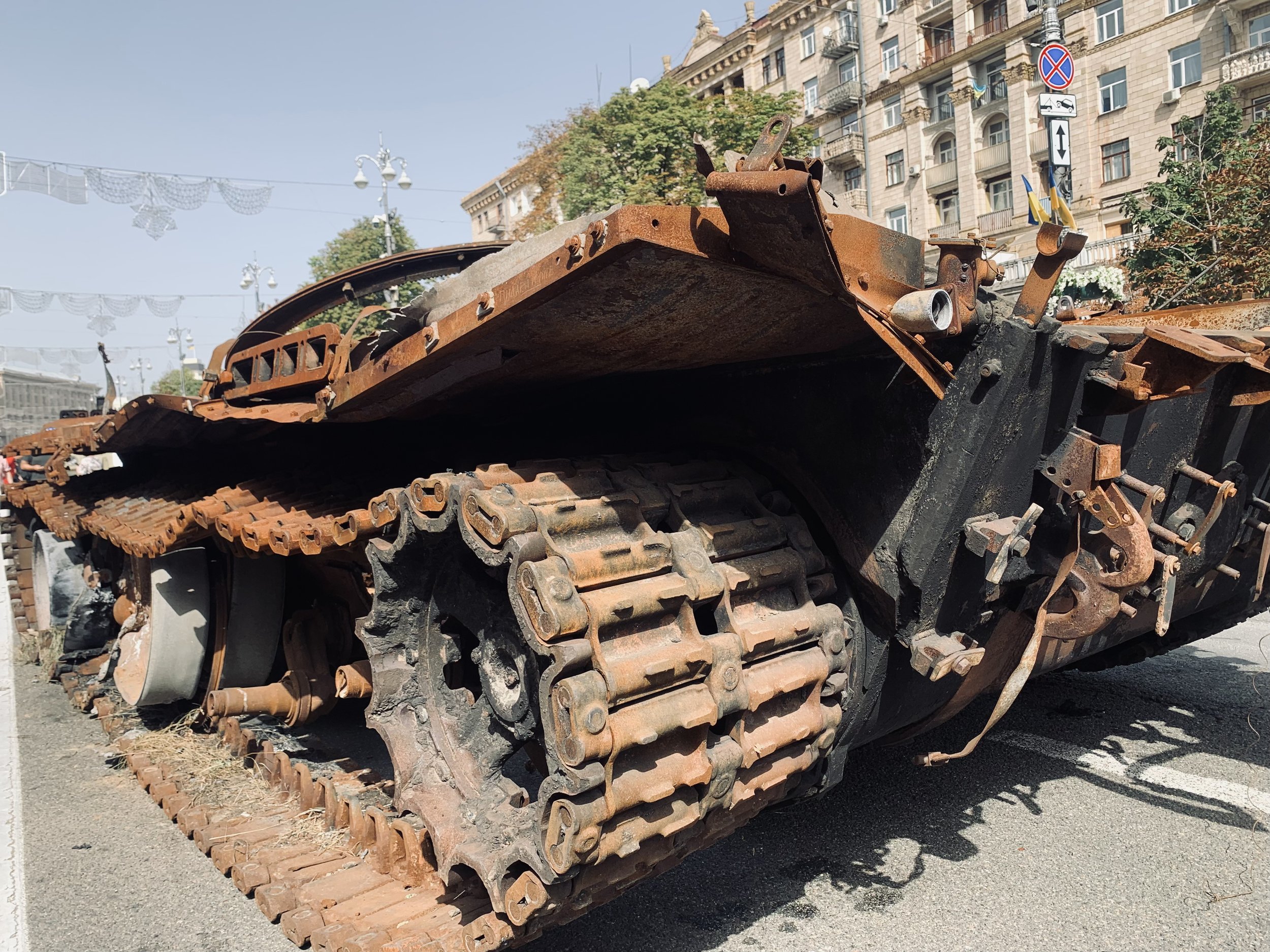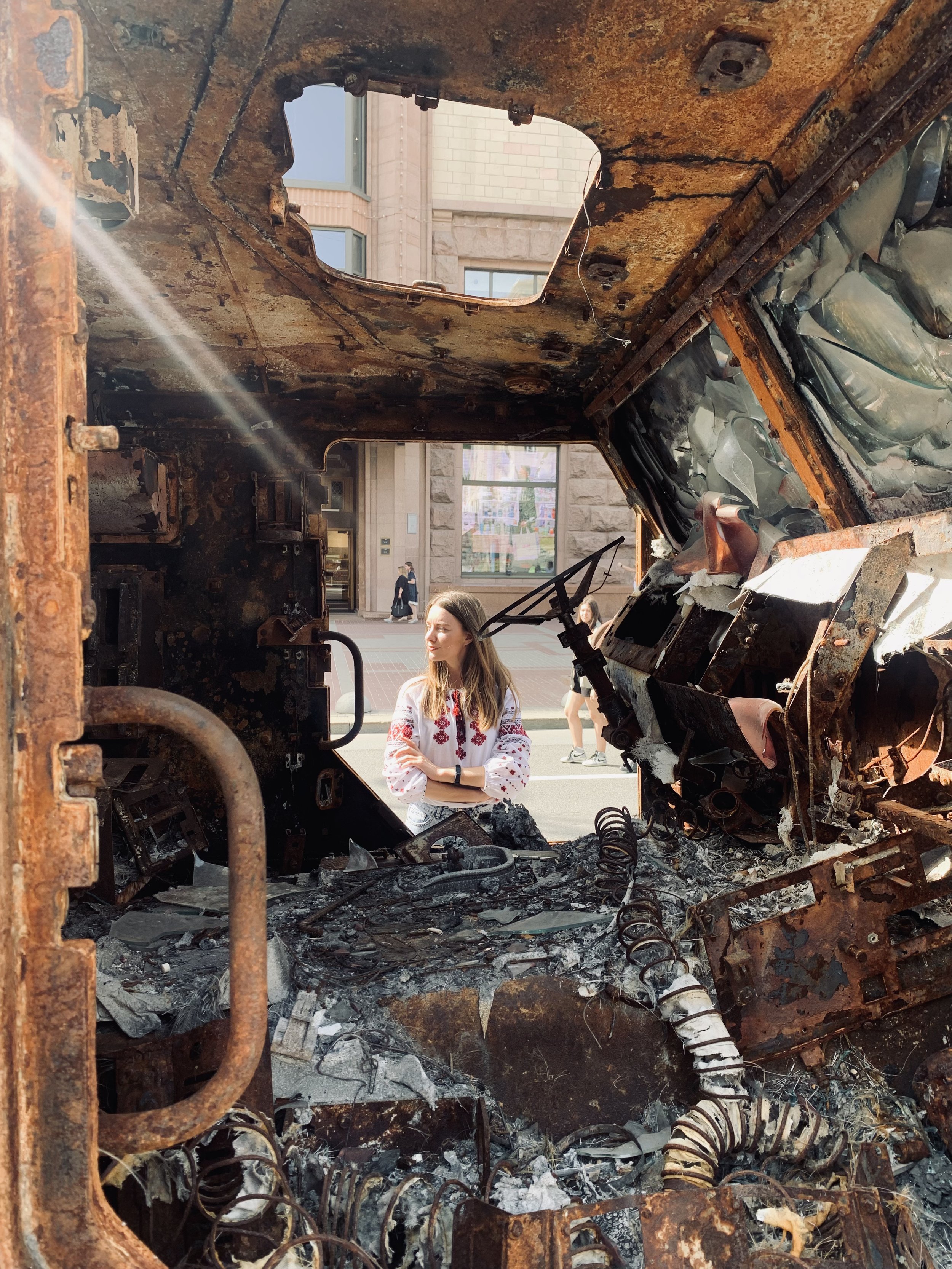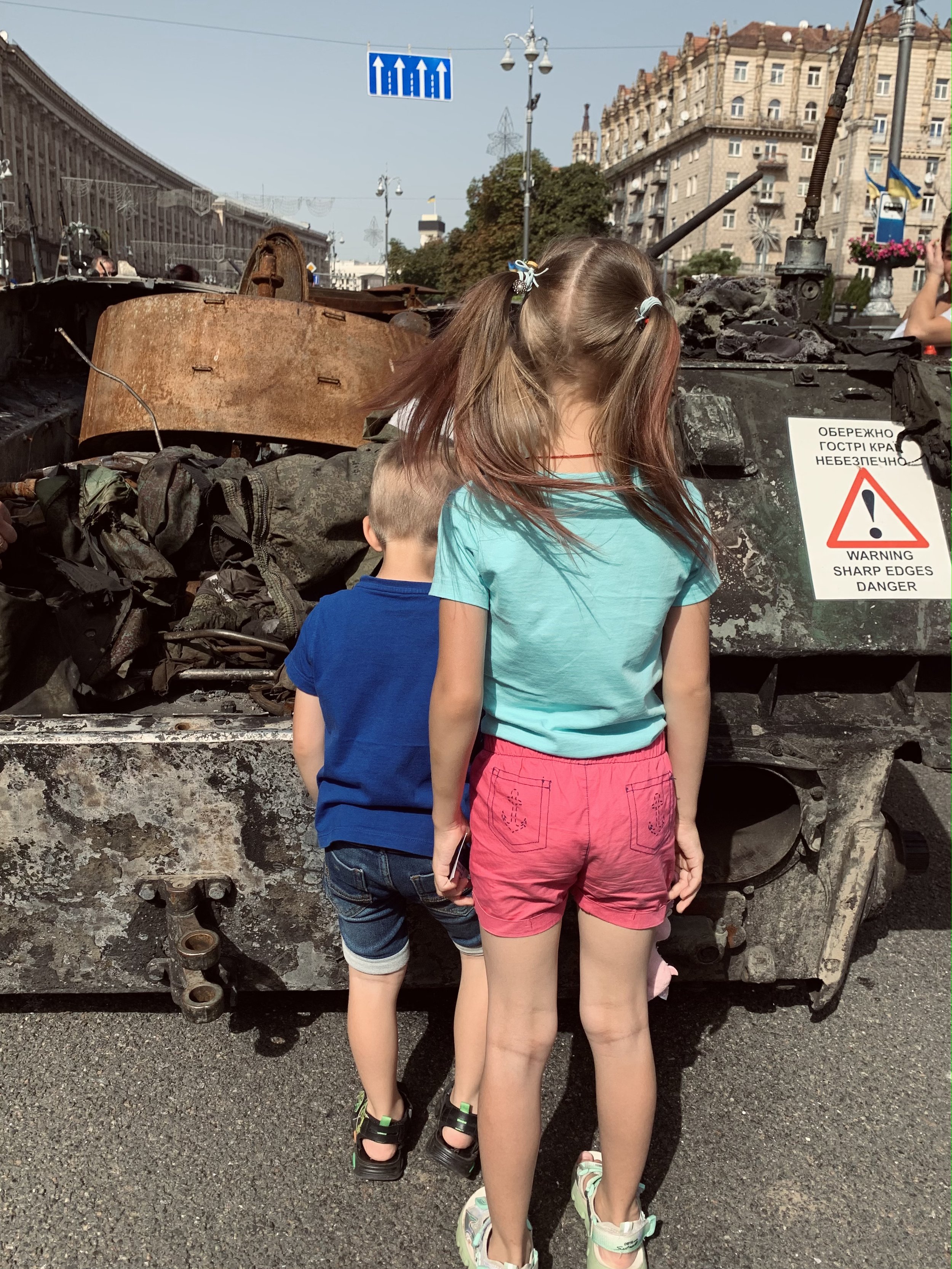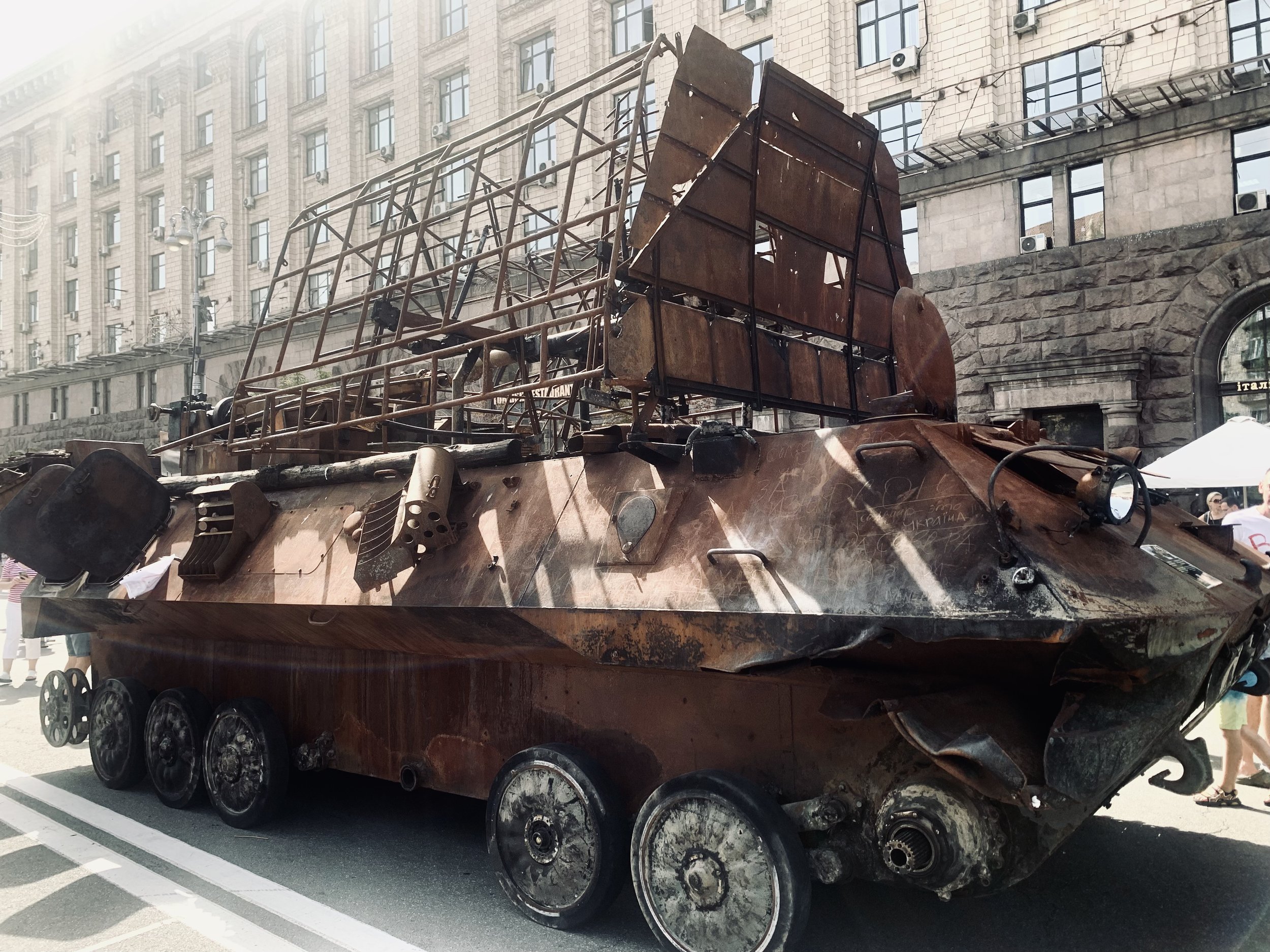The price of independence
On August 24, Ukraine celebrated 31 years of independence. On this same day, exactly six months have passed since the full-scale invasion of Russia. Instead of a traditional military parade, destroyed Russian equipment was displayed on the central street in Kyiv. And instead of a festive concert, Ukrainians in all regions heard air raid alarms, a total of 189 times a day. This year, we all clearly realized: independence has its price. What does independence mean for Ukrainians today?
For many years, Independence Day in my family was a usual public holiday, more like just an extra day off. Of course, we had our family customs. First, we used to watch the military parade on TV in the morning. Traditionally, after that, cultural events and celebrations used to take place all over the country, and in the evening there was a grand concert which ended with a salute.
Military parade* on the 24th of August 2021 © president.gov.ua official website of the President of Ukraine
This is how most Ukrainians remember Independence Day during the first two decades of our country's existence. Fundamental changes began in 2014, when Russia annexed Crimea and occupied part of Ukrainian territory in the east. And with the beginning of the war this year, the concept of "independence" again acquired its primary, genuine meaning for each Ukrainian, who is aware of the high price one has to pay for freedom.
Military Parade* - This tradition first appeared in Soviet times during the celebration of the first of May (International Workers Day in the USSR) or November 7 (October Revolution Day). After the Second World War, the parade was moved to May 9, Victory Day, as another reason to demonstrate the country's military strength. This tradition was established in post-Soviet countries. But in the first years after the declaration of Independence of Ukraine, parades involving military equipment were not held because Ukraine was officially positioned as a non-nuclear and non-aligned state. So the first Ukrainian parade on Khreshchatyk, the central street of Kyiv, took place only in 1994, the next one was in 1998, and from then on almost every year.
The history of Ukrainian Independence Day
Ukraine had to fight for independence for hundreds of years: from the times of Kyivan Rus in the 9th - 13th centuries, the Galician-Volhynia Principality (1199 - 1349), Ukrainian Cossack State (1648 – 1764) and finally the Ukrainian People's Republic, or Ukrainian National Republic (1917-1921). But each time, due to external attacks and internal disagreements, Ukraine lost independence again. The idea of restoring statehood was revived a few decades later, which, in particular, was influenced by the Soviet repressions. In 1990, one by one, the republics of the Soviet Union began to declare their sovereign. Ukraine was no exception. On July 16, 1990, the Verkhovna Rada of the Ukrainian SSR (the Ukrainian parliament) voted for the "Declaration on State Sovereignty of Ukraine". This moment became a turning point and made it possible to adopt the Act on the Declaration of Independence of Ukraine a year later, on August 24, 1991. The decision in the parliament was supported by 346 deputies out of 362. Even the communists, who obviously had a majority in Parliament at that time supported independence
Voting in the Verkhovna Rada for the declaration of Ukraine's independence © Central State Film and Photographic Archives of Ukraine named after H. S. Pshenychny
Ivan Zaiets, a Ukrainian politician, a former deputy of the Verkhovna Rada of Ukraine and one of the founders of the Ukrainian declaration of independence recalls: "It was a demand of an active part of society. The idea of the independence of the Ukrainian state initially dominated the “maydans*”, and with the adoption of the declaration, it moved into the government offices.
Maydans* - A prefabricated concept, implying mass protests and peaceful demonstrations of Ukrainians, when people get together on the central squares of cities demanding reforms that are critical to the people and the country. Usually the largest protests of Ukrainians like the Orange Revolution in 2004 as well as the Revolution of Dignity (Euromaydan) in 2013-2014 took place there.
Then there was an opportunity to combine the energy of citizens with the desire of the authorities to peacefully restore Ukrainian statehood." The final decision was up to the people. On December 1, 1991, a national referendum was held, in which more than 90% of participants supported the Act of Proclamation of Independence of Ukraine. And within a week, on December 8, 1991, the Belavezh Accords were signed. They declared that the Union of Soviet Socialist Republics had effectively ceased to exist and meant the final destruction of the communist totalitarian system.
Russia’s denial: From then to now
However, even then, Russia did not accept Ukraine's decision to go its own way, resorting to both military and economic blackmail, recalls Ivan Zaiets: "When we voted for the independence of Ukraine on August 24, 1991, a day later, the press secretary of the Russian president, Pavlo Voshchanov, made a statement, which was essentially blackmail and carried a threat. He said that to those republics that had embarked on the path of independence, Russia could ask questions about borders... And we saw further activities of the Russian authorities: They manipulated the prices of energy carriers and increased the prices of gas and oil. It hit our economy very hard... And already at this time, they scared the world with the threat of an atomic attack if Ukraine became an independent state. They tried to discredit the idea of independence itself.” With the recent invasion of Ukraine, the Kremlin is trying to take revenge for the loss of the USSR in the Cold War and display its power to the United States and Western counties. This is why, Foreign Secretary of Ukraine Dmytro Kuleba for example always talks about protecting the security architecture in Europe. Ivan Zaiets added that the Russians understand that the independence of Ukraine does not allow them to restore the Russian Empire, and redraw the political map of the world: “I would suggest today not to consider the Russian-Ukrainian war in the plane of the struggle between totalitarianism and democracy. There are deeper processes here, it is a struggle between barbarism and civilization."
Independence Day 2022: Between horrors and hope
Russia’s intolerance of Ukraine’s independence was confirmed on February 24, 2022. Our 31st Independence Day this year coincided with the day that also marks 6 months since the Kremlin unleashed a full-scale war here. On this holiday, I returned home to Kyiv from Germany. The atmosphere was completely different from what I had experienced ever before. The Ukrainian government warned the population in advance about possible mass missile attacks by Russia. So any large-scale celebrations were forbidden. Instead, a "Russian parade" was held on the central street of Kyiv - Khreshchatyk. However, not as the Kremlin would like to see it. There were about 80 units of Russian tanks, armoured vehicles, anti-aircraft missile systems and trucks destroyed by the Ukrainian Armed Forces. According to Forbes, the total cost of these wrecked vehicles reaches $176 million. Meantime, warnings about possible Russian attacks on Ukraine's Independence Day were not in vain. On August 24, Russian troops shelled 58 Ukrainian settlements. During one of the attacks, a rocket hit a railway station near the village of Chaplin, Dnipropetrovsk region (70 km from the front line): 25 people were killed and more than 30 were injured.
The “Russian parade” on 24th of August 2022 in Kyiv © Aleksandra Silik
I talked to Ukrainians from different regions of the country - in the north, west, and south. Independence Day has acquired a special meaning for everyone. Olena Mordacheva, who was born in the city of Chervonograd, Lviv region, notes that the Soviet customs of celebration are being eradicated now: "In the past, of course, it was a day off, and there was a concert on the central square. But it seemed less important to the people back then. Miner's Day, which is exactly one week later, was celebrated just as much. Now I perceive this day in a completely different way... For me personally, the celebration starts on National Flag Day (August, 23). This is a great opportunity to wear a vyshyvanka (Ukrainian traditional shirt), enjoy the city, which is turning blue and yellow, and to talk with people not about artists or a barbecue, but about our values and our future." Olena Dzhyrma from Odesa in the south of Ukraine, recalls: “In Odesa, it was nice to see the Duke* in Ukrainian traditional clothes and to hear people who tell you in Russian about their love for Ukraine. We were all united as one. It is important to be who you are. Independence is about the power to resist the forces that lead you astray.”
Duke* - a bronze monument to the Frenchman, Armand Emmanuel du Plessis, Duc de Richelieu, the first monument erected in Odessa
The people who have been on the front lines are feeling the changes, too. Andriy Bilobrov, a military man from Kyiv, says that we managed to feel the essence of this holiday only after the start of the war: “Before that, it was more of a formality. Some complained about the need to spend money on the parade, and some only treated it as just another day off. All because we didn't understand the value of it. Now a fierce struggle continues, and this holiday takes on a new meaning for the entire Ukrainian nation. We have to fight for our independence."
As for me, this is a fight not only for people and territory, but also for the right to have our own language, culture and values. Independence has its price. It is not measured by money or the number of natural resources. Independence is millions of people who are ready to sacrifice their lives for a dignified, free future.

